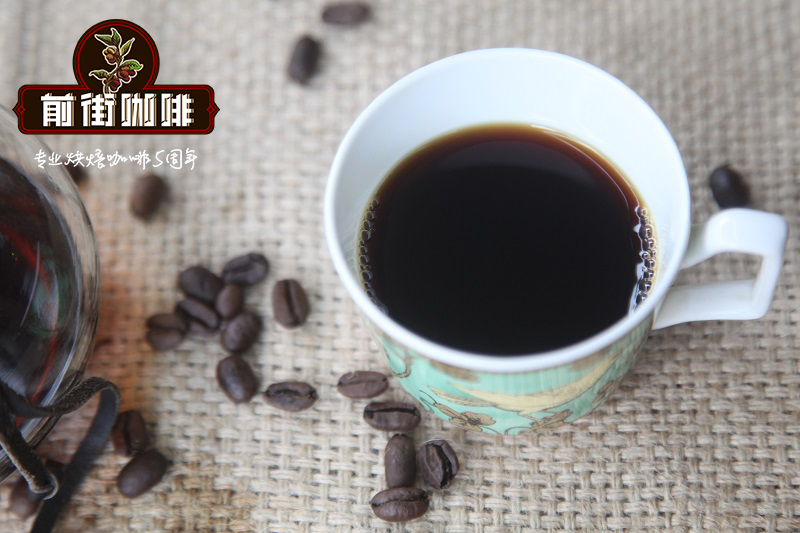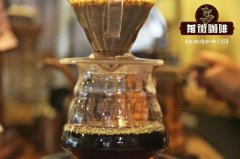Can rose summer be planted in the United States? Growing Arabica Coffee trees on Coffee Farm in California, USA

Professional coffee knowledge exchange more coffee bean information please follow the coffee workshop (Wechat official account cafe_style)
The book says that coffee can only be produced in the "coffee belt" between the Tropic of Cancer and the Tropic of Cancer, and the American certificate is wrong. Nine years ago, Jay Ruskey, a farmer who grew up in Hollywood, planted coffee seeds on an organic farm in the mountains of Santa Barbara. This year, the estate already has 10 different varieties of Arabica coffee trees, including Gesha, Parcamara, Caturra, Catuai, Typica and, less commonly, Leroy.
Arabica, from Ethiopia, has a history of only 700 years, and who discovered coffee, who and when brought her to the Arab world 700 years ago is still a mystery. However, this little coffee bean has boundless magic, which makes me travel all over Europe, Asia, Africa, North and South America to explore its truth from its source. This time I came to Santa Barbara, California, USA, and stayed on an organic farm for two nights.
Located about two and a half hours northwest of Los Angeles, Santa Barbara is a beautiful and quiet seaside town facing the blue Pacific Ocean, with charming beaches, Spanish-style buildings bathed in the soft sun, beautiful mountains and idyllic climate. it is the back garden of many Hollywood stars and ranks fourth among the top 10 ideal places for American millionaires. Bieter and Angela Zuli also live here.
Spanish missionaries and soldiers were the first Europeans to settle in Santa Barbara in 1782, and the old city still retains the Presidio built by the Spaniards. Presidio is like an ancient castle, with plaster walls, red tile tops and colorful tiles, with strong Spanish characteristics. In addition, Santa Barbara is also an important wine region, every year from September to early December, is the Santa Barbara grape picking season, there will be a variety of wine tasting parties, happy and busy to celebrate the harvest. But I'm not here for wine tasting this time, but to explore coffee grown in the United States.
Coffee fields in the foothills
Drive from the old city of Santa Barbara to the foothills of Goleta. The car passes through the winding mountain road, and it takes less than half an hour to reach the target farm, Goodland Organic. Because of its lush farmland, lemon orchards and golf courses, Goleta is nicknamed "The Good Land". The 40-hectare farm occupies a large area of land on the mountain, planting a variety of fruit trees, among which avocados, dragon fruits, figs, litchi and finger limes shaped like roe are the most abundant. Jay's parents bought the farm in Ellwood in 1989 and began to learn to grow avocados. In the early days, he tried to grow many different rare fruits, and then he saw a growing market for boutique coffee, and Jay received funding from the University of California (University of California) to develop locally grown coffee.
Coffee tree is an evergreen shrub of Rubiaceae. It usually doesn't blossom for the first time until 3 to 4 years old. The book also says that coffee trees usually bloom once a year, bloom after the rainy season, the flowers are white, smell like jasmine, wither after two or three days of flowering, and then begin to bear fruit. "avocados and coffee trees need very similar nutrients, soil quality and growth environment, so they try to grow coffee. Jay picked two avocados from the tree and said, "I introduced coffee trees from high-altitude Central America 10 years ago and bought coffee bean processing equipment. I have learned a lot from my failures over the years. "Jay cut the avocados and sprinkled them with salt and pepper and handed them to me. The avocados ripe on the trees are very delicious.
Latitude makes up for altitude
When you visit the coffee farm, there is little chance of seeing blossoms and red fruits at the same time. The book also says that the growth conditions of Arabica tree species must be on hillsides ranging from 1000 meters to 2000 meters above sea level and should not be directly exposed to the sun. however, last year, California experienced a 10-year dry season, and many cities made water. Close to Santa Barbara in Las Vegas, although close to the Pacific Ocean, it also brings a desert climate.
Walking on the shady farmland, basking in the sun for at least 340 days a year, Jay pointed to the coffee trees with white flowers and ripe red cherries and said to me, "our latitude seems to make up for the altitude." Perhaps because of the sunny and warm climate, coffee berries grow faster, have a shorter ripening period, can be harvested all the year round, and cherries and small white flowers hang on the tree at the same time. There have been Japanese and British buyers offering US $60 a pound for my raw coffee beans, but the local market is small, mainly based on educational tour groups. Boot Coffee tested Goodland Organic's gesha coffee with boutique coffee from other producing areas, and the result showed that the American rose summer scored more than 85 points. It seems that the owner even broke the fate that "rose summer must grow at a foggy altitude". He has recently set up a nursery. Apart from cultivating and studying other boutique coffee trees, he also hopes to introduce high-profit agricultural products such as black truffles.
At first, I only chewed but didn't drink.
According to historians, the earliest coffee was not used to drink, and the aborigines of Ethiopia had a habit of chewing coffee fruits and leaves to refresh themselves. If I am asked to pick coffee beans, I will definitely lose money. When other people pick beans, I will put them in the entrance. It is rare to work in the field with the landlord. I can eat 10 different varieties of coffee cherries at once. Of course, I don't miss the opportunity to take a few bright red fruits ripe on the trees and put them into my mouth. I found that except for Rose Summer, the other 9 varieties have the same taste, except that the aroma and flesh taste different, a bit like longan meat, but not the juicy and thick flesh of longan.
When I left Santa Barbara, I looked at the surfers on the Pacific coast on the train. I suddenly thought that the climate of ── California is similar to that of Bordeaux in France, and the soil diversity is equally high. if California can grow different kinds of coffee trees, can France and Italy produce coffee beans? Red wine and coffee are also agricultural products, and the painstaking efforts and time paid by farmers are similar, but their income is poor. Is it because the predecessors tried to plant it in Europe but failed to plant it? Or is it because of the low cost that Western countries are forced to bring coffee to their colonial countries and use the seized land and coolies to produce it? It's worth exploring.
Related recommendations: drink coffee, Arabica beans contain the least caffeine
Important Notice :
前街咖啡 FrontStreet Coffee has moved to new addredd:
FrontStreet Coffee Address: 315,Donghua East Road,GuangZhou
Tel:020 38364473
- Prev

How to drink the coffee beans of geisha in the estate of San Tuareo, Colombia?
Professional coffee knowledge exchange more coffee bean information Please follow the coffee workshop (Wechat official account cafe_style) over the years in Colombia's boutique coffee farm, Santu Ali has been a leader in technology and planting methods in the industry, the soul of which is the manor owner Camilo (Camilo Merizalde), Camilo was born in Colombia's Va Valley.
- Next

Brazil production area introduction: Brazilian Minas Coffee Manor grows flavor Brazilian Minas Coffee
For more information on coffee beans, please follow the Coffee Workshop (official Wechat account cafe_style) population summary of Brazil: 201033000 people there are many different coffee varieties in Brazil, many of which have been developed or evolved here, including Mondonovo, Huangbourne, Kaddura and Katuai. The state of Minas Gerais is located in southeast Brazil, Minas Gerais.
Related
- Does Rose Summer choose Blue, Green or Red? Detailed explanation of Rose Summer Coffee plots and Classification in Panamanian Jade Manor
- What is the difference between the origin, producing area, processing plant, cooperative and manor of coffee beans?
- How fine does the espresso powder fit? how to grind the espresso?
- Sca coffee roasting degree color card coffee roasting degree 8 roasting color values what do you mean?
- The practice of lattes: how to make lattes at home
- Introduction to Indonesian Fine Coffee beans-- Java Coffee producing area of Indonesian Arabica Coffee
- How much will the flavor of light and medium roasted rose summer be expressed? What baking level is rose summer suitable for?
- Introduction to the characteristics of washing, sun-drying or wet-planing coffee commonly used in Mantenin, Indonesia
- Price characteristics of Arabica Coffee Bean Starbucks introduction to Manning Coffee Bean Taste producing area Variety Manor
- What is the authentic Yega flavor? What are the flavor characteristics of the really excellent Yejasuffi coffee beans?

